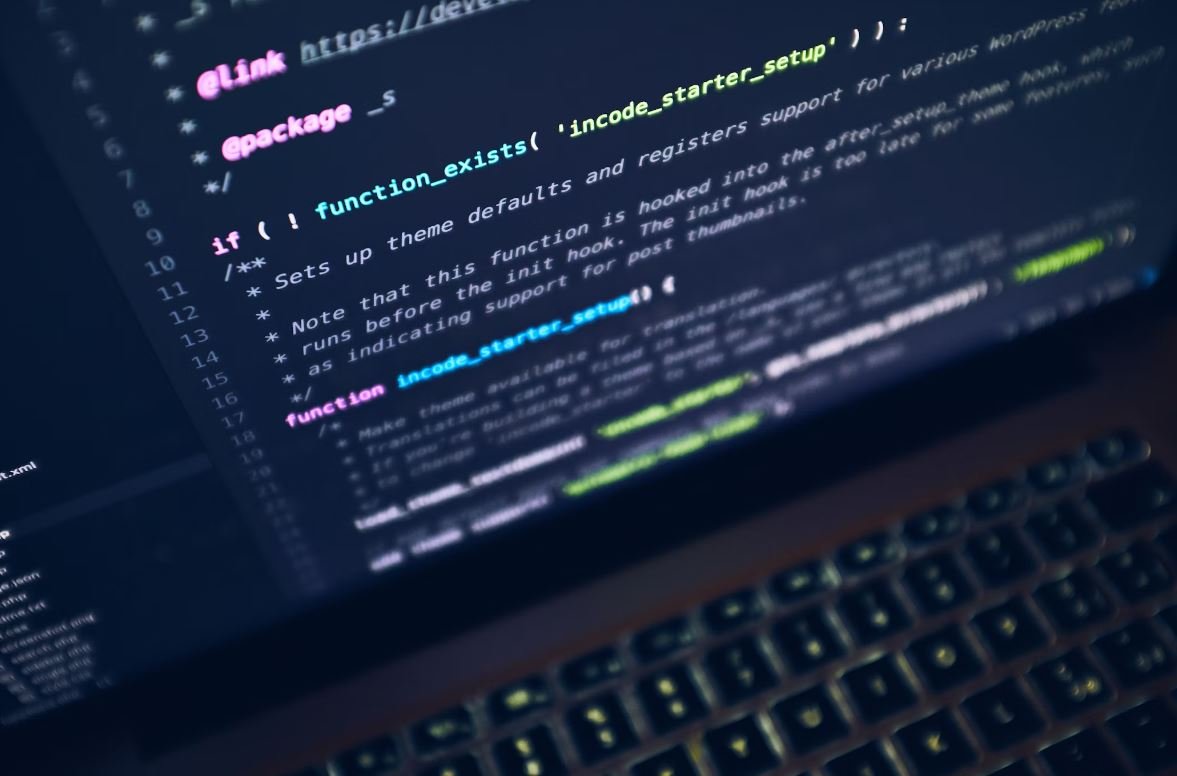Deepfake and Law
In recent years, the emergence of deepfake technology has raised concerns about its potential impact on society, particularly in the legal arena. Deepfakes refer to manipulated videos or images that use artificial intelligence to replace the appearance and voice of a person with that of another. This technology has the potential to disrupt various aspects of our lives, including politics, business, and personal relationships. As deepfakes become increasingly convincing, lawmakers around the world are grappling with how to regulate and address the challenges they pose.
Key Takeaways:
– Deepfakes are manipulated videos or images that use artificial intelligence to replace the appearance and voice of a person.
– Deepfake technology raises concerns about its potential impact on society and legal issues.
– Lawmakers are working to regulate deepfakes and address the challenges they pose.
Deepfakes and Legal Consequences
Deepfake technology has profound legal implications. In the field of criminal law, this technology has the potential to undermine the credibility of evidence and create new challenges for trials. For instance, deepfake videos could be used to create false alibis or falsely accuse innocent individuals. Additionally, deepfake revenge porn poses a significant threat to privacy and consent laws, as fake explicit content could be created using someone’s likeness without their permission. It is crucial for lawmakers to develop frameworks that protect individuals from the potential harm caused by deepfakes.
Deepfakes have the potential to manipulate evidence and undermine the credibility of trials.
Regulating Deepfakes: Current Efforts
Given the potential harm caused by deepfakes, lawmakers around the world are taking steps to address this issue. Some countries, such as the United States, have introduced legislation specifically targeting deepfakes. The Deepfake Report Act requires the Department of Homeland Security to generate annual reports identifying deepfake technology advancements, potential malicious uses, and strategies to detect and combat such manipulation. Other countries, like Australia and Germany, have criminalized deepfake creation for malicious purposes. These efforts reflect a growing recognition of the need to curb the spread of deepfakes and protect society at large.
Lawmakers in various countries are introducing legislation to combat deepfake technology.
The Challenges of Deepfake Regulation
Regulating deepfakes poses several challenges. Firstly, deepfake technology is constantly advancing, making it difficult for lawmakers to keep up with the ever-evolving techniques used to create convincing manipulated content. Furthermore, deepfakes can cross international borders, making it challenging to enforce regulations in a globalized world. Moreover, distinguishing between harmless parodies and harmful deepfakes created with malicious intent can be a complex task. Striking the right balance between free speech and protecting individuals from harm is a delicate challenge that lawmakers must grapple with.
Keeping up with the rapid advancements in deepfake technology poses a significant challenge for lawmakers.
Deepfake Awareness and Education
In addition to legislation, raising awareness about deepfakes and educating the public about how to identify them is crucial in countering their negative impact. Individuals must exercise caution when viewing and sharing media content, particularly if it seems suspicious or too good to be true. Organizations and tech companies have a responsibility to develop and deploy detection tools that can identify manipulated content accurately. By promoting media literacy and developing effective detection methods, society can mitigate the potential harm caused by deepfakes.
Educating the public about deepfakes and promoting media literacy is essential in countering their negative impact.
| Country | Deepfake Legislation |
|---|---|
| United States | The Deepfake Report Act |
| Australia | Criminalization of deepfake creation for malicious purposes |
| Germany | Criminalization of deepfake creation for malicious purposes |
In conclusion, the proliferation of deepfake technology has raised significant legal concerns. From its potential impact on evidence in criminal trials to the erosion of privacy and consent, lawmakers are faced with the challenge of creating effective regulations. Despite the difficulties involved in regulating a rapidly advancing technology, efforts are underway to address the potential negative consequences of deepfakes. By combining legislation, awareness campaigns, and technological advancements, society can navigate the complex landscape of deepfakes and safeguard ourselves from their harmful effects.
References
- “Deepfakes: A Looming Crisis for National Security, Democracy and Privacy?” (Harvard Journal of Law & Technology, Vol. 32, No. 2).
- “Deepfakes and Democracy – Protecting Integrity and Preserving Truth in the Age of Synthetic Media” (Digital Civil Society Lab).
- “Inside the UK’s struggle to fight rising flood of verified extremism and fake news” (The Guardian).

Common Misconceptions
Misconception 1: Deepfakes are always used for illegal activities
One common misconception about deepfakes is that they are only used for illegal activities such as spreading misinformation or defaming others. While it is true that deepfakes can be used for malicious purposes, such as creating fake pornographic materials or manipulating political videos, they can also have legitimate applications. For example, deepfake technology can be used in the entertainment industry to create realistic special effects or in healthcare for medical simulations.
- Deepfakes can be used to create visual effects in movies and video games.
- Researchers use deepfakes as a tool for studying the effects of various scenarios.
- Educators can use deepfakes to enhance learning experiences.
Misconception 2: It is easy to identify deepfakes
Another misconception is that it is easy to identify deepfakes. While certain deepfakes may have visual artifacts or inconsistencies that can be detected by experts or advanced algorithms, newer techniques are becoming increasingly sophisticated. Deepfake technologies are continually evolving, and it is becoming harder for untrained eyes to distinguish between real and fake content. This poses challenges and potential risks for individuals and organizations who may fall victim to convincing deepfake manipulations.
- Deepfakes created using advanced techniques can have highly realistic visual quality.
- Manipulated videos can be enhanced with audio deepfakes, further increasing their believability.
- Deepfakes can be produced using readily available software, making them accessible to a wider range of people.
Misconception 3: Deepfakes are the only form of synthetic media
Deepfakes are often associated with synthetic media, but it is important to note that they are not the only form of synthetic media. Synthetic media encompasses a broader range of technologies and techniques for creating or altering digital content. For example, computer-generated imagery (CGI) has been used in the film industry for decades to create visual effects. Deepfakes are just one subset of this larger category of synthetic media, albeit one that has gained significant attention due to the potential for misuse.
- CGI has been used for creating fictional characters and creatures in movies.
- Other forms of synthetic media include voice synthesis and text generation.
- Synthetic media has both positive and negative applications in various industries.
Misconception 4: Legislation alone will solve the deepfake problem
There is a misconception that legislation alone will solve the deepfake problem. While legal frameworks can help deter and address deepfake-related offenses, they cannot completely eliminate the problem. Deepfake technology is continuously evolving, and as new methods and techniques emerge, it becomes a cat-and-mouse game between creators and authorities. Combating deepfakes requires a multi-faceted approach that involves technological advancements, media literacy, and collaborations between various stakeholders.
- Technological advancements are necessary to develop more effective deepfake detection methods.
- Education and media literacy efforts can help individuals become more critical consumers of information.
- Collaborations between technology companies, researchers, and policymakers are crucial to address deepfake challenges.
Misconception 5: Deepfakes will always deceive people
While deepfakes have the potential to deceive people, it is not accurate to assume that they will always be successful in doing so. As awareness about deepfakes grows, individuals are becoming more cautious and skeptical when encountering suspicious or manipulated content. Moreover, the development of deepfake detection technologies and media forensics tools provides means to identify and flag potential deepfakes. However, it is important to remain vigilant, as this technological cat-and-mouse game will likely continue to evolve.
- Awareness campaigns can help educate the public about the existence and dangers of deepfakes.
- Media forensics tools can assist in identifying digital manipulations and deepfake content.
- Active engagement from the public in critical thinking and fact-checking can mitigate the impact of deepfakes.

Introduction
Deepfake technology has emerged as a significant concern in recent years due to its potential to deceive, manipulate, and exploit. With its ability to create highly realistic but fabricated media content, deepfakes pose considerable challenges for legal systems around the world. This article examines various aspects related to deepfakes and the legal measures in place to address this growing issue.
Table: Notable Instances of Deepfake Misuse
This table highlights some notable examples of deepfake misuse, showcasing incidents that have gained significant attention in recent times. These instances illustrate the potential harm that can arise from the use of deepfakes for malicious purposes.
| Incident | Description |
|---|---|
| Election Interference | Deepfakes used to spread false narratives and manipulate public opinion during elections. |
| Revenge Porn | Deepfake explicit videos created using the likeness of individuals without their consent. |
| Financial Scams | Deepfake audio used to impersonate high-level executives and deceive employees into transferring funds. |
Table: Legal Responses to Deepfakes
This table presents various legal responses implemented by governments and organizations to combat deepfakes and protect individuals from their harmful effects.
| Legal Response | Description |
|---|---|
| Anti-Deepfake Legislation | Introduction of specific laws criminalizing the creation and distribution of deepfakes without consent. |
| Technological Solutions | The development of advanced AI algorithms to detect and identify deepfake content. |
| Education and Awareness Campaigns | Efforts to educate the public about deepfake technology and its potential dangers. |
Table: Impact of Deepfakes on Trust
This table examines the erosion of trust caused by the proliferation of deepfake technology across various sectors.
| Sector | Impact |
|---|---|
| Journalism | Undermining trust in news sources and spreading misinformation. |
| Entertainment Industry | Raising doubts about the authenticity of celebrity appearances and performances. |
| Financial Sector | Diminishing confidence in video and audio evidence used for fraud investigation. |
Table: Deepfake Detection Techniques
This table showcases various techniques employed to detect and identify deepfake content, aiding in the fight against its deceptive nature.
| Detection Technique | Description |
|---|---|
| Facial Analysis | Advanced algorithms analyzing facial structure and movements to identify anomalies. |
| Audio Analysis | Examining audio patterns and inconsistencies to detect synthetic speech. |
| Blockchain Verification | Using blockchain technology to verify the authenticity of media content. |
Table: Deepfake Content Removal Process
This table illustrates the general process followed by platforms and organizations to swiftly remove deepfake content from their platforms.
| Step | Description |
|---|---|
| Flagging | Users report suspected deepfake content to platform administrators. |
| Content Review | Platform personnel evaluate the flagged content to determine if it violates guidelines. |
| Removal | If deemed a violation, the deepfake content is promptly removed from the platform. |
Table: Deepfakes and Privacy Rights
This table examines the impact of deepfakes on privacy rights and the challenges faced by legal systems in preserving individual privacy.
| Privacy Concern | Description |
|---|---|
| Consent for Use of Likeness | Deepfakes often utilize someone’s likeness without obtaining their consent. |
| Public Figures and Privacy | Legal complexities arise due to the public figure status of individuals in deepfake scenarios. |
| Non-Consensual Deepfake Creation | Deepfakes created and disseminated for malicious purposes without the target’s consent. |
Table: Legal Jurisdiction Over Deepfake Cases
This table explores the challenges surrounding the determination of legal jurisdiction in cases involving deepfakes, which often transcend geographical boundaries.
| Jurisdictional Challenge | Description |
|---|---|
| Transnational Deepfake Creation | Deepfakes created in one jurisdiction but affect individuals in multiple countries. |
| Data Server Location | Complexities arise when the deepfake content is hosted on servers located across different regions. |
| Challenges in Enforcement | Difficulties in enforcing legal actions when perpetrators reside in different jurisdictions. |
Table: Collaboration Between Tech Companies and Law Enforcement
This table highlights instances of collaboration between technology companies and law enforcement agencies to combat the misuse of deepfake technology.
| Collaboration Action | Description |
|---|---|
| Research Partnerships | Tech companies engaging in joint research projects with law enforcement to develop detection tools. |
| Data Sharing | Sharing information and data to enhance the effectiveness of deepfake detection and prevention. |
| Training Programs | Conducting training sessions for law enforcement to detect and investigate deepfake-related crimes. |
Conclusion
Deepfake technology presents a significant challenge for legal systems worldwide. The misuse of deepfakes, from election interference to privacy violations, threatens trust, individual rights, and societal stability. Governments and organizations are responding by enacting legislation, developing detection techniques, and fostering collaboration between tech companies and law enforcement. However, the battle against deepfakes is ongoing, requiring continued efforts to protect individuals, maintain trust, and adapt legal systems to this evolving threat.
Frequently Asked Questions
What are deepfakes?
Deepfakes are manipulated videos, images, or audio recordings created using artificial intelligence techniques. They combine or superimpose existing media onto source material, making it appear as though the content was real.
How are deepfakes created?
Deepfakes are created using deep learning algorithms, particularly generative adversarial networks (GANs). These networks are trained using large datasets of images or videos to generate realistic-looking content.
What are the potential legal implications of deepfakes?
Deepfakes can be used to spread misinformation, defame individuals, manipulate elections, commit fraud, violate privacy, and engage in other illegal activities. The legal implications can include defamation, privacy invasion, intellectual property infringement, and even criminal charges.
How can deepfakes affect individuals and society?
Deepfakes can harm individuals by damaging their reputation, causing emotional distress, and jeopardizing their personal and professional lives. They can also undermine trust in media, fuel conspiracy theories, and manipulate public opinion, thus posing significant threats to democratic processes and social stability.
Are deepfakes illegal?
In many jurisdictions, the creation and distribution of deepfakes without consent can be illegal. However, the laws surrounding deepfakes vary by country and are still evolving, making it important to consult local legislation and seek legal advice.
Can deepfakes be used as evidence in legal proceedings?
Deepfakes may present challenges in legal proceedings due to their manipulative nature. Courts and legal experts are developing methodologies to assess the authenticity of media evidence and distinguish deepfakes from genuine content. Currently, the admissibility of deepfakes as evidence is determined on a case-by-case basis.
What measures can be taken to combat deepfake-related issues?
To combat deepfakes, various approaches can be employed. These include developing advanced detection technologies, promoting media literacy and critical thinking, enhancing legal frameworks, encouraging platform accountability, and raising public awareness about the existence and potential risks of deepfakes.
Can technology prevent the spread of deepfakes?
While technology can play a role in detecting and mitigating the impact of deepfakes, it cannot entirely prevent their spread. As deepfake techniques continue to evolve, it is essential to combine technological advancements with legal, educational, and societal efforts to effectively address the challenges posed by deepfakes.
What are the ongoing research and development efforts regarding deepfakes?
Researchers, technologists, and policymakers are actively exploring solutions to tackle the deepfake problem. This includes developing more sophisticated detection algorithms, creating forensic methods to identify manipulated media, fostering collaborations between industry and academia, and considering legislative measures to combat deepfake-related crimes.
Where can I report or seek help regarding deepfake-related issues?
If you encounter deepfake-related issues, such as maliciously created content or potential legal violations, it is recommended to report them to law enforcement agencies, social media platforms, or other relevant authorities in your jurisdiction. Additionally, seeking legal advice can help determine the appropriate course of action.




